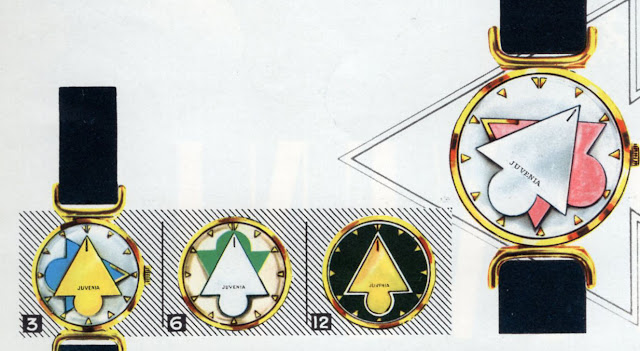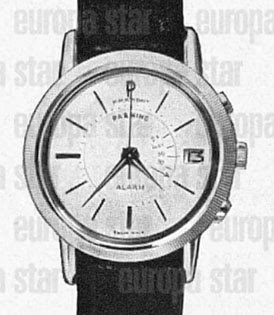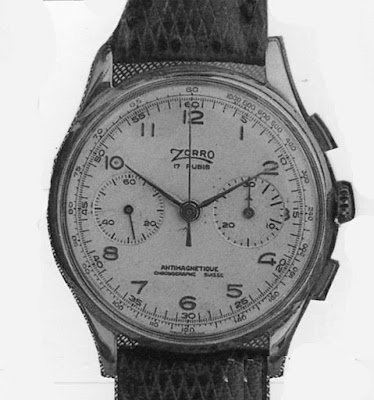By Bruce Shawkey
Novelty Watches and Clocks Through The Decades
Almost since the invention of wristwatches, manufacturers have sought to add extra features. It wasn't enough to just tell time. The watch had to incorporate a compass, a notepad, a keyring for your auto, or a grill for your Bugatti if you were a car enthusiast. This is just a sample of novelty watches through the decades. Let's take a look.
Before we get to the wristwatches, I have to show you this pocket watch. It is just so cool:
Vintage is 1886. The Lancaster ladies watch camera was brought into Bonhams auction house by a man whose grandfather had owned it originally. He was a cabinetmaker at the Birmingham-based firm J. Lancaster & Son, probably working on the many wooden cameras sold by the company. He noticed that among his collection was what looked like an ordinary nickel-plated pocket watch case when closed – but when he opened it, he discovered that it actually contained a tiny camera inside. It brought 21,600 Pounds, about $21,020.
The Enicar Compass Watch
This is probably the first novelty wrist watch. It's by Enicar and has a built-in compass. It's actually a pocket watch made into a wristwatch with hinging lugs. It's quite long, at about 50mm. I can't imagine using the compass; it's about the size of a dime!
Next up, we have the Notora, invented by Favre Leuba in the 1920s. This somewhat ordinary wristwatch has a very special feature: a hidden compartment containing a scroll on rollers under the dial and movement. By pushing a little release button at the bottom of the case, the watch opens up to reveal the notepaper rolls which can be advanced by using the two roller knobs on the case. The owner can then write grocery lists, telephones, reminders, etc.
World War II brought us spy wristwatches that could take pictures, or record conversations. Here is a Steineck Subminiature Wrist-camera that could take up to eight pictures on a disc that was an inch in diameter:
Here is a Hanhart chronograph from 1949 (below) that contains a microphone. An attached cable ran up the wearer’s arm, where a tape recorder was hidden. These were widely produced and used by spy agencies around the world. It was priced at 350 Deutsche Marks. It brought 340 British pounds at the auction house of Elstob & Elstob:
There have long been novelty watches associated with the automobile. Probably the first were the car grill watches made by Mido in the 1920s. Alfa Romeo, Benz, Bugatti, Buick, Chevrolet, Chrysler, Citroën, Fiat, Ford, Lincoln, Opel, Peugeot, Rolls-Royce were all copied. Today, they are all highly sought by watch and car aficionados alike:
Next, we have watches designed for the inside of the car, specifically attached to a key ring:
Here are some addition novelty watches, built into a keychain, letter opener, and cigarette lighter:
Next, we have the Marvin tire watch:
Ernest Borel was a master of the novelty watch. Collectors are probably familiar with the Cocktail watch. But they produced an even funkier watch.
Juvenia also got into the act with their "Planete" and "Tigone" models, which are so novel, they are actually difficult to tell the time. They didn't sell well; I have never seen an actual example of either one:
And of course, we have cigarette lighters with watches built into them;
Here's a watch that reminds you to plug the parking meter:
Spy movies brought us their share of novelty watches. Remember the watch James Coburn wore in the movie "In Like Flint"? It had a little lever that would extend and tickle the wrist, waking Flint from his deep meditations:
Ernest Borel is probably the king of novelty watches with their Cocktail watch:
The quartz era brought us a couple of novelties: Calculator, and miniature television:
And then we have the watches from the James Bond movies, notably Roger Moore, Pierce Brosnan and Daniel Craig. The watches could do everything from summoning help to cutting steel with a laser beam.
Today, we have watches that can do virtually everything, from monitoring pulse and blood pressure to displaying a recipe for coq au vin, complete with image. I remember 20 years ago when a fellow watch historian wrote s short book on multi-purpose watches. I asked him where he believed technology would go from here. He replied, "You ain't seen 'nothin' yet."
Here's a clock built into a small transistor radio:
In the '70s, these "steering wheel" watches were popular:
Pen/clock combinations have been popular for quite some time:
Here's a Zorro watch. Normally, these are cheap pin lever watches, intended for children. This one is not only a jeweled lever watch, but also a schronograph:


























No comments:
Post a Comment